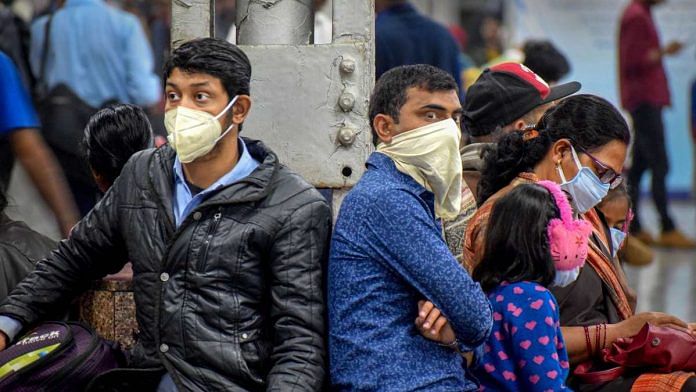New Delhi: Epidemiologists and statisticians are projecting the spread and fatalities of coronavirus in India and other countries. They have used past data and some other parameters to arrive at these figures.
A study at the Imperial College London has showed that if the virus spreads unchecked, 80 per cent of America will be infected and 0.9 per cent of people will die.
In this scenario, the country’s health system will collapse, and twice of those infected may die. If the same figures are projected for the world then 90 million people can die of coronavirus.
The study also said mitigation measures may reduce the number of deaths by two-thirds and if drastic measures like suppression and lockdowns are taken, fatalities can be contained to a few thousand.
The study clearly gives these three scenarios.
Also read: On science of Covid-19 — drugs, threat to diabetics and why it’s killing more Italians
Why purely statistical view creates panic
Indian professor Ramanan Laxminarayan gave interviews to Barkha Dutt and Karan Thapar on projections of coronavirus cases and fatalities.
He said by July, 300 to 500 million Indians will get infected and a couple of million Indians can die.
He started with a presumption that numbers are actually much higher than what the government has reported. He also said if the numbers were true, the government wouldn’t be giving World War analogies.
Chennai-based data journalist Rukmini S. has written an article on projections of coronavirus cases. She said that if the rate of COVID-19 spread continues, 30,000 deaths can occur in India by May.
There are various variables that statisticians cannot deal with, such as lockdowns in India and the enforcement of them. It’s also difficult to include weather and its effect on the virus in their forecast. Many studies have shown that there is a link between weather and how this virus spreads.
Laxminarayan also said the virus will come back in November-December and there will again be many fatalities. But this is under the presumption that no treatment will be found by that time and countries will not have scaled up their capacity to test and treat.
Are children really at risk?
Laxminarayan said it has been found that children under the age of 1 are also at risk.
In a paper published in the American Journal of Health Association, an analysis of the first 72,000 coronavirus cases in China has been made. This study has found that there were no fatalities below the age of 10. Less than 1 per cent of the infections are of those under 10 years of age.
In another paper from China, it has been found that the median age for children infected is 6.7 years of age. Children suspected to have COVID-19 were identified and 1,391 of them tested. Out of these only 171 were found positive.
Twenty seven per cent of them were asymptomatic and only 1.5 per cent had fever. Eighty per cent cases were mild and only five per cent were critical.
Rukmini S. pointed out that India only has 2.5 beds per thousand people, whereas America has about five times of this capacity.
Additionally, India only has 70,000 ICU beds. This means, if the virus spreads unchecked, Indian hospitals will be over-stressed.
You can watch the full episode of CTC here:
Also read: Hypertension, diabetes increase COVID-19 risks — clinical data emerges on usual suspects




Bura mat dekho
Bura mat kaho
Bura mat suno
Corona bura hai
We cannot blame the gentleman for giving stupid predictions and calculations. It can be forgiven. Curtain medication can cause that effect. But the channel airing these baseless information are the real culprits.
All experts are busy handling the virus and here we have people facilitated to give proxy opinions as they deem correct. Which is a crime. A crime invoking unrest. This must be dealt legally which will happen soon.
The guys (researchers) are making assumptions. US is well equipped they say. Hahaha. See the condition for yourselves. Health system has collapsed completely. Its all in paper, in reality they are big zero. There’s no grocery and provisions in new jersey.
Indians as a race are unhappy and have low self esteem… these 2 are pefect examples. Why always busy in depicting India as poor, inefficient etc etc. These 2 researchers need to do more homework.
Sir
I am student of masters in university of lucknow (Department of statistics)
Sir i want know about your method of prediction regarding spreading of covid 19 in INDIA ,how you create your mathematical model and what is the result.
would you like to share on my Email.